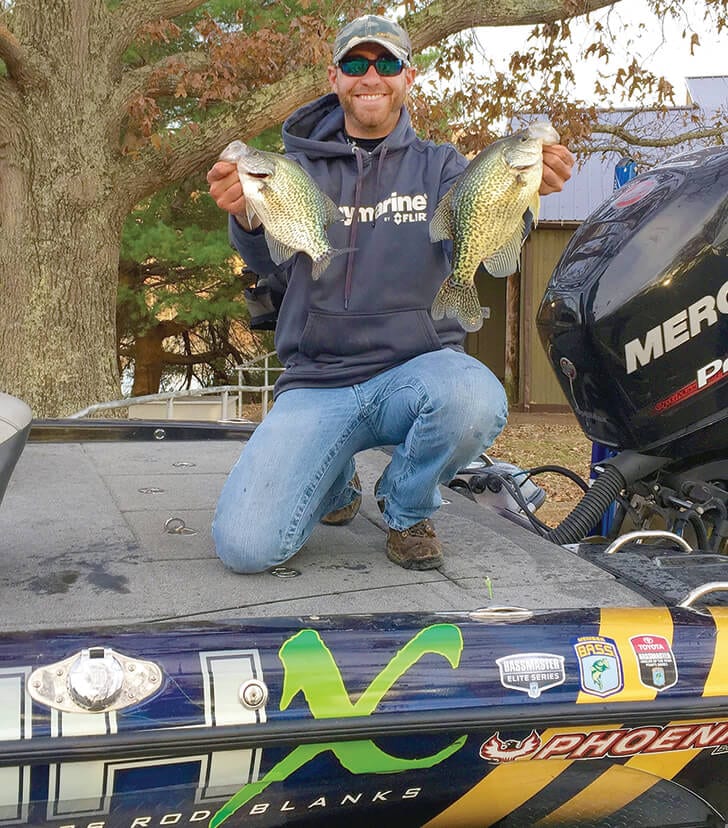When water temperatures dip into the 50s, I like to take a few days to leave my bass fishing gear at home and go crappie fishing. Most folks equate crappie with spring, but I’m here to tell you the winter bite is as good as it gets.
Not only do crappie taste better when you pull them from cold water, they seem to run larger than they do when they’re up on the banks in the spring. And when you find them piled up, it can lead to a cooler full very quickly.
Crappie stack up in large schools this time of year. If you know what to look for, it’s not hard to catch them. Finding good cover is always the ticket when it comes to crappie, and this is especially true during the winter months. On many reservoirs, boat docks are prime crappie cover. It seems like there are a few magic docks that always hold fish, and I also like to hunt them down with my Raymarine electronics. With the SideVision mode, it’s just a matter of idling around potential holding water and looking for them. They will be in big winter schools, so I might cruise past 50 docks before hitting on the mother lode. Once I see them on the SideVision, I’ll drop an Aqua Vu camera down to make sure they are crappie and see how big they are.
I’m looking for depths of at least 20 feet beneath a dock. For obvious reasons, these deep-water docks are floating docks, and that’s something you can look out for. I have found them around docks with 60 feet of water under them, and the fish will be suspended 8 to 15 feet from the surface.
If your lake or river has mostly fixed position docks with poles, crappie will get on them as well. The best way to narrow the search on permanent docks is to look for the ones right on the edge of a creek or river channel. With a good map card like Navionics platinum these places are easy to find. If you can find a dock that has a little brush on it, you can almost bet there will be crappie around.
Once you find crappie, cast exactly where they are or just beyond. Winter crappie have a very small strike zone. Count your bait down to the desired depth, and reel just fast enough to maintain that depth.
My favorite jig head is a 1/32-oz. ball-shaped jig head with a good sharp Mustad hook, but I will go up to a 1/16 oz. if the wind is blowing or I’m fishing deeper than normal. The natural bait is going to be larger this time of year, so soft-plastic minnow imitations in the 2-inch range with a straight tail will work.
I use a S721 MHX rod built with supplies from Mud Hole Custom Tackle, including a Winn grip. It is 6 feet long, super-sensitive, and has the perfect action for controlling small baits. I team it with a 1,000-size spinning reel and – pound Vicious Panfish line in fluorescent green. The green line helps detect light strikes.
